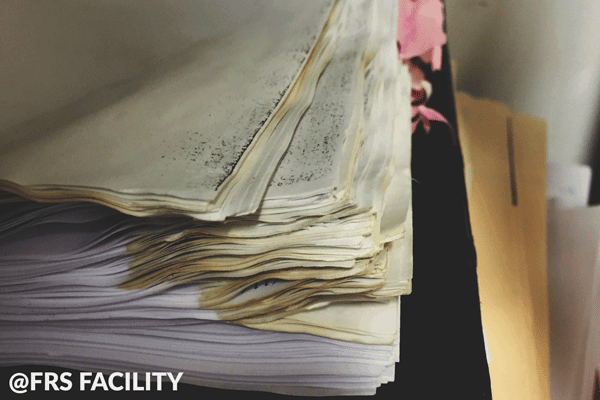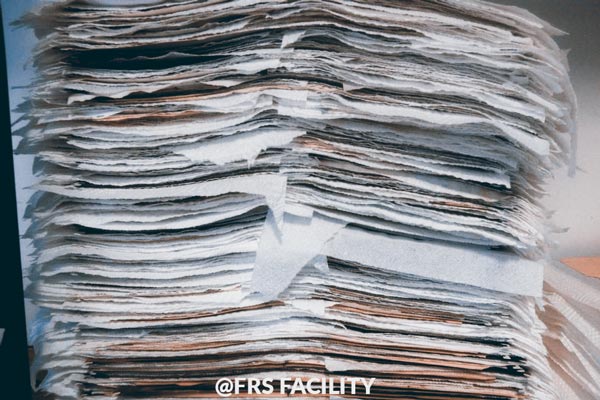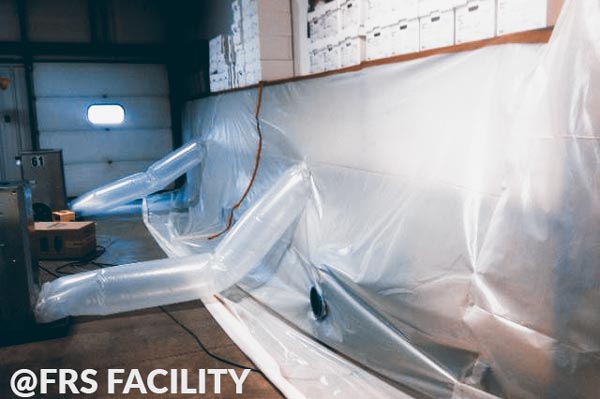Drying Documents and Books
Have you ever had wet books, certificates, licenses, contracts, photographs, maps, manuals or other documents? If you have ever faced this problem, you might understand that drying documents and books is harder than it seems.

Water has very strong destructive properties and water damage has been known to cause structural and integral damage to a home and its components like wood, metal, cardboard and organic fibers. If left unabated or unattended, the results can be rot, deterioration and eventually irreparable damage.
Books, for instance, can be ruined, warped or deformed beyond recognition or usability. Particularly if the homeowners decided to dry them on their own accord using improper ways of performing document drying. Damage to water exposed books can occur within a span of one or up to four hours after the items have been soaked in water. Pages can swell as the materials absorb more and more amounts of moisture. The bindings and the cardboard-based covers are of different materials from the pages and have different water absorption rates. These differences would result in the pages swelling more and causing the bindings to deform. In some cases, the pages detach themselves from the bindings and causing further damage.
In some cases, water damage occurs not because of direct exposure to water, but due to other reasons such as humidity. High levels of humidity in damp places such as basements or attics, which result in higher moisture absorption, can eventually lead to water damage. This results in the rapid deterioration of the item and if left unattended could result in damage beyond repair.
What about drying your documents?
Loose Papers
When handling loose paper sheets extra care should be employed to prevent further damage like tears or smudges. Dirt and grime, particularly if the water damage was caused by floods, can be removed using clean water. Each sheet can be layered out on paper towels to dry using a dehumidifier and if possible set up a drying chamber to house the documents. You also want to make sure you use only plain paper towels avoiding using towels with ink prints on the surface.

Books and Manuals
A technique that can be used for water damaged books is to isolate them inside an enclosed area with a dehumidifier that can remove the moisture inside the area. This method is effective in drying out wet books; however, a problem that could arise would be on how to prevent deformation during the drying process.

Vacuum Freeze-Drying Method
In this method, the wet item is frozen at a very fast rate to prevent the water from creating further deterioration on the paper material. A freezer that is set to -40 degree Celsius is used for this purpose. The frozen book is then placed inside a vacuum chamber and the temperature inside the chamber is slowly elevated to thaw the material out. Evaporated moisture is removed from the chamber by the vacuum as the temperature is slowly elevated further. To prevent deformation, mechanical placeholders clamp down on the books hindering any movements resulting in warped pages or cover.
Any of these methods are effective restoration techniques. However, homeowners should expect that water damaged books may not be fully restored to pre-damaged conditions. Ink smears and tears prior to the recovery process will remain permanent. Recovery though is still at a high percentage and restored books would once again be usable. Again, the homeowner should gauge the worth of the book or document versus the cost incurred to hire the services of a restoration company.

 Emergency
Emergency Residential Restoration
Residential Restoration Commercial
Commercial Water Removal
Water Removal Water Damage
Water Damage Water Damage Repairs
Water Damage Repairs Flood
Flood Sewage Cleanup
Sewage Cleanup Fire Board
Fire Board Fire Damage
Fire Damage Commercial Water Damage
Commercial Water Damage Commercial Fire Damage
Commercial Fire Damage Mold Inspection
Mold Inspection Mold Removal
Mold Removal Wind
Wind TOMI
TOMI Case
Case Helpful
Helpful ERP Client
ERP Client Construction
Construction Kitchen
Kitchen Bathroom
Bathroom Home
Home Office
Office Book Remodel
Book Remodel About
About Contact Us
Contact Us Our Story
Our Story Events
Events FRS Team
FRS Team Media
Media FAQ
FAQ Apply Now
Apply Now Careers
Careers Plumber Referral
Plumber Referral All Posts
All Posts Cleaning
Cleaning Commercial
Commercial Schools & Colleges
Schools & Colleges Churches
Churches Healthcare Facilities
Healthcare Facilities Senior Living Homes
Senior Living Homes Government Municipalities
Government Municipalities Hospitality
Hospitality Industrial
Industrial Multi-Family Housing
Multi-Family Housing Emergency Services
Emergency Services
